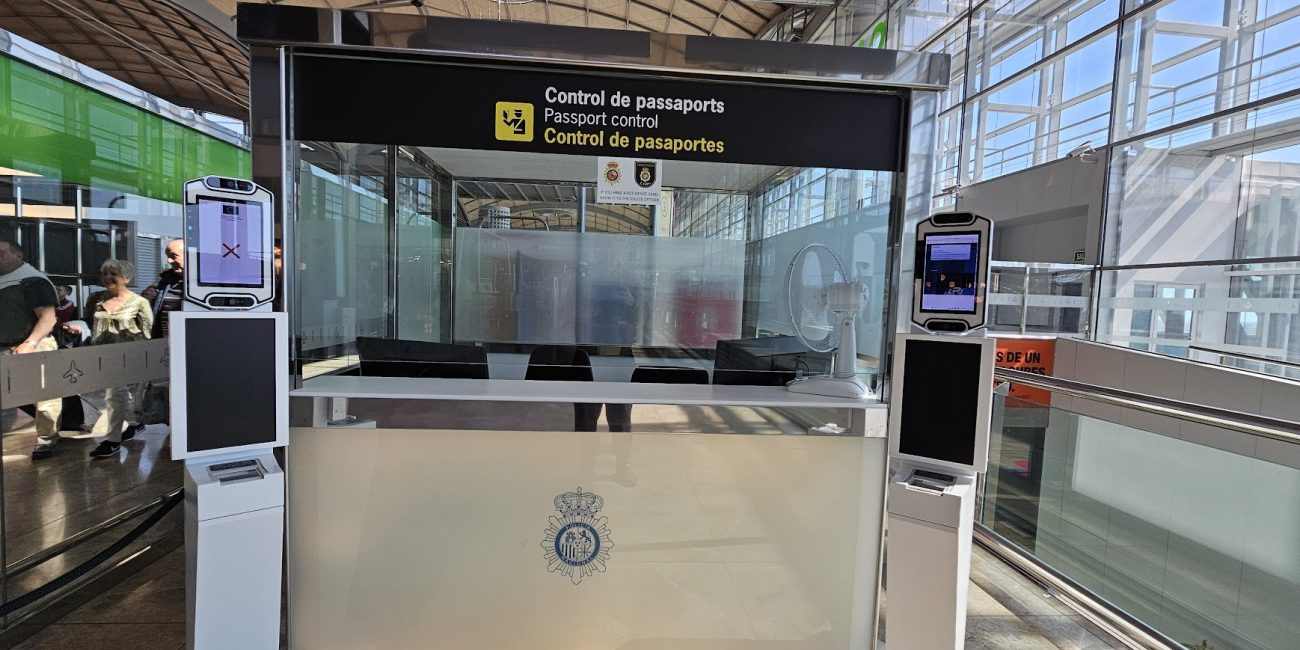Officials have confirmed that biometric checks will replace stamps in passports for individuals travelling within and outside of the EU beginning on October 12th 2025.
The Entry/Exit System (EES) will supplant the current paper checks, necessitating that the faces and fingerprints of passengers from the United Kingdom be scanned in order to cross an EU border.
It will not be entirely implemented until April 10th, 2026, as the scheme will be implemented across member nations over a six-month rolling period.
It was intended to be implemented in November of last year; however, technological complications have prevented it from doing so.
Non-EU citizens, including those from the United Kingdom, will be required to register their biometric data in conjunction with their passport details to enter an EU country under the new system.
Entry into the European Union will be denied to any individual who declines to submit their biometric data.
At present, travellers are required to bring their passports to a border official for inspection and stamping.
Data will be collected at the site of departure, which may be an airport, port, or train station. Specialised booths will be available for the purpose of scanning fingerprints and capturing photographs.
This record will remain legitimate for three years, allowing border officers to focus solely on verifying an individual’s biometrics during subsequent trips. The EU anticipates that this process will save time. E-gates will also be accessible to individuals who possess ePassports.
EES registration is free of charge
Digital records will be retained for a maximum of three years and one day for the majority of visitors. However, those who exceed the 90-day visa-free limit will have their data retained for five years.
The objective of the system is to enhance border security; however, there are concerns regarding the length of the delays. The United Kingdom government has issued a warning to travellers that they should “be prepared to wait during busy times” when the scheme commences, as the necessary checks will require several minutes to complete.
Nevertheless, the European Union has stated that the EES will reduce border wait times by facilitating quicker checks and enabling passengers to submit their information in advance once it is implemented.
The departure of the United Kingdom from the European Union has resulted in lengthy lines of British travellers at airports in numerous prominent European holiday destinations, as their passports have been required to be checked and stamped.
The new system has also resulted in lengthy queues at the Eurotunnel, and there are concerns that it will further exacerbate the waiting times for individuals travelling to and from France by vehicle.
French border checks have been instituted on British soil at the Port of Dover, the Folkestone end of the Eurotunnel, and the St. Pancras terminal of Eurostar. Passengers will be provided with hand-held devices to register in their vehicles.
The UK and EU reached an agreement in May that enables UK nationals to utilise EU e-gates; however, this authorisation is contingent upon the implementation of the EES.
“UK nationals will be able to use e-gates where they are available, provided they are registered in the system, once the EES is in place,” an EU Commission spokesperson informed the BBC at the time.
E-gate access is already permitted for UK citizens in certain European countries, such as Germany and Bulgaria.









No Comment! Be the first one.